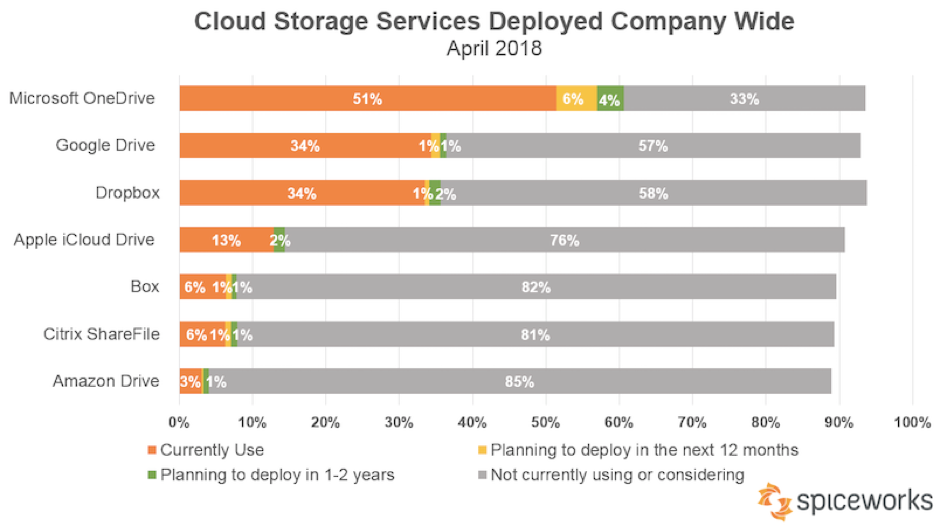
The Latest Cohesity News
Product and Solution Information, Press Releases, Announcements
| Get the Most Out of Your Backup and Recovery Strategy for OneDrive with Cohesity | |
| Posted: Thu Jun 13, 2019 02:01:18 PM | |
|
According to 2018 Spiceworks survey conducted amongst the 500 top IT decision makers, a whopping 80% of organizations use cloud storage/file sharing services. Microsoft Office 365 OneDrive came out to be the most widely used cloud storage service.
With organizations increasingly relying on O365 OneDrive to foster collaboration across teams, and with business IP finding its way to OneDrive, itís important that an enterprise-grade backup and recovery strategy is put in place. But while Microsoft is responsible for service availability, data is still the responsibility of the organisation. The organization owns the data on OneDrive, and so bears the sole responsibility to prevent permanent data loss. Itís important for the organizationís backup and recovery strategy to include OneDrive and prevent permanent data loss scenarios resulting from infrastructure failures, accidental deletion, insider threat, synchronization issues, and, foremost, security breaches. Cohesity understands the need for an enterprise-grade backup and recovery solution for OneDrive and is extending the existing support for Office 365 to include OneDrive, with the goal to offer protection for the entire Office 365 suite in the near future. With Cohesity, you get the benefits of true scale-out architecture. While this lends to better planning, the real benefits accrue when customers leverage the indexing, search, and analytics abilities of the platform to drive data protection workflows for their Office 365 workloads. Along with the aforementioned platform features, below is how Cohesity ties into OneDrive Data Protection.
|




